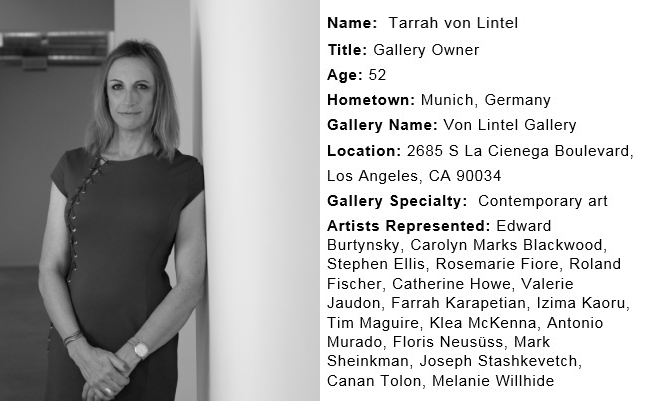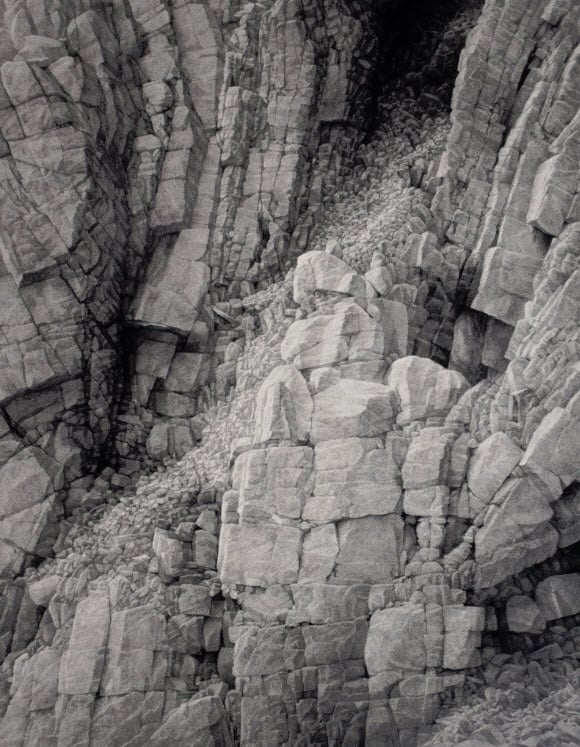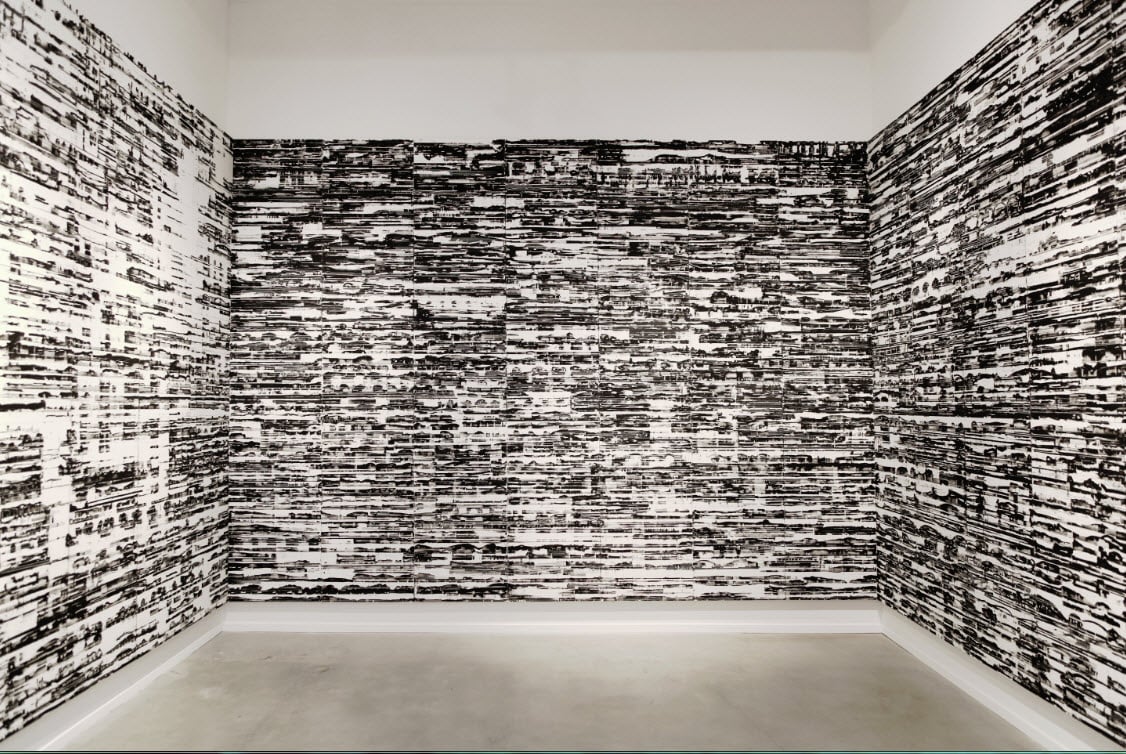Galleries
Dealer Spotlight: Von Lintel Gallery
Tarrah von Lintel talks art and why relocating to LA was the right move.

Tarrah von Lintel talks art and why relocating to LA was the right move.

Artnet News

Last year, the Von Lintel Gallery relocated from New York City’s Chelsea district to Los Angeles. The decision to move westward was prompted, in part, by the up-and-coming LA art scene, but also by the need for a change of pace. The move has proven refreshingly opportune for gallery owner Tarrah Von Lintel, who talks to us about how she got her footing as a gallerist and why she made the big leap west.

Tell us about your background in art and what led you here.
For a couple of years, my father had a gallery in the house we lived in at the Starnberger See near Munich, Germany. His concept was the combination of antiques and Pop Art—mostly prints—which is a period I remember vividly. I ended up, however, studying finance and investment, followed by a short career in banking, after which I switched to the art world in search of something more fulfilling. In 1989, I first worked for Galerie Claire Burrus and then Thaddaeus Ropac in Paris, before opening my own gallery in Munich in 1993, where I focused mainly on New York painters, some of whom, like Stephen Ellis, Catherine Howe, Antonio Murado, and Mark Sheinkman, I still represent today. In 1999, I moved the gallery to New York, and, after 15 successful years there, I decided to move the gallery to Los Angeles.
Tell us about your first show. Was there a particular moment, good or bad, that was memorable for you?
My first show was with a sculptor by the name of Mark Mennin in my first space in Munich. It was a fantastic exhibition, which did surprisingly well, but I did not have enough money to change the flooring, and the space had been an office, so you could very clearly see the walking patterns where the desks had been placed on the carpet. It was like an unintended site-specific installation. As long as you didn’t look at the floor, the art on the walls looked fabulous.
How did you settle on your specialty, and what makes your gallery unique? What is the most challenging part of running a gallery?
I started out concentrating on abstract painting, but over the last 20+ years, I became more and more interested in art that wasn’t necessarily what it looked to be. I now work with a lot of unique or camera-less photography, which could easily be mistaken for painting or drawing, and, on the other hand, I have painters and artists who work exclusively with paper, whose work is often mistaken for photography or prints. The most important thing for me is to work with art that will keep a dialogue with the viewer for a very long time, something that doesn’t become part of the decoration.

Joseph Stashkevetch, Palisade/Scree #1 (2015). Conte crayon on rag paper. Courtesy of Von Lintel Gallery.
What is your next important show? Tell us why we should come.
The next important show will be Edward Burtynsky’s photographs, which will open on April 25. Edward’s work functions on several levels, the way good art should. His breathtaking and timely images show how nature is transformed by industry. The beauty of the photographs is often in tension with the compromised environments they depict.

Edward Burtynsky, Dryland Farming #2, Monegros County, Aragon, Spain (2010). Chromogenic print. Courtesy of Von Lintel Gallery.
Since you started, what have been the biggest changes in the gallery market?
I would have to say the biggest changes in the market are its size and the importance and proliferation of art fairs. Another important change has been the advent of the Internet. When I started, we would send collectors transparencies of the work by mail. They would then take time to study and look at the work. Nowadays, if the artwork doesn’t reproduce well on the screen, it is much harder to sell. We look at thousands of images every day. The ‘art’ of really looking is very hard to find nowadays.
If you were not an art dealer, what would you be doing?
Working with furniture somehow, or racing fast cars.
What inspired your decision to move from New York to Los Angeles? How has this affected your gallery, and do you plan on any location changes or expansions in the future?
There is much thought that went into my decision of relocating to LA, but in the end, it comes down to opportunity. I loved my time in New York, and it went well, but I just didn’t like where the community was heading. The massive increases in real estate prices seem to dictate programming and our personal lives more and more. In Los Angeles, I saw a bourgeoning art market with a better quality of life. I was able to find a fantastic gallery in a prime location (Culver City right next to Blum & Poe) that is roughly three times as large as my last New York space, but I pay 20% less. I live in a house a few minutes from the gallery by car, which has a garden with a lemon tree and zero noise at night. It doesn’t seem like much, but after having lived in Williamsburg, Brooklyn, until recently, it is very much appreciated.
How do you perceive the current Los Angeles art scene in comparison to New York and other international art capitals?
I am still learning about the LA art scene, but it is refreshingly welcoming to outsiders. Collectors, critics, and artists come to see my exhibitions even if they don’t know the artist. I expected very little traffic in the gallery, but I was completely wrong. The timing here is different, so the summer tends to be much busier in LA than in New York, where things seem to slow down significantly after May, only to really resume in September. I am also surprised at how many visitors we get from New York and Europe. I think significantly fewer curators from around the world visit LA than New York, but I also believe that’s changing. Most of all, there is so much potential here. The greater Los Angeles area has a population in excess of 16 million, and many of them are interested and eager to learn.

Canan Tolon, installation view (2014). Courtesy of Von Lintel Gallery. Photo by Eamon Conklin.